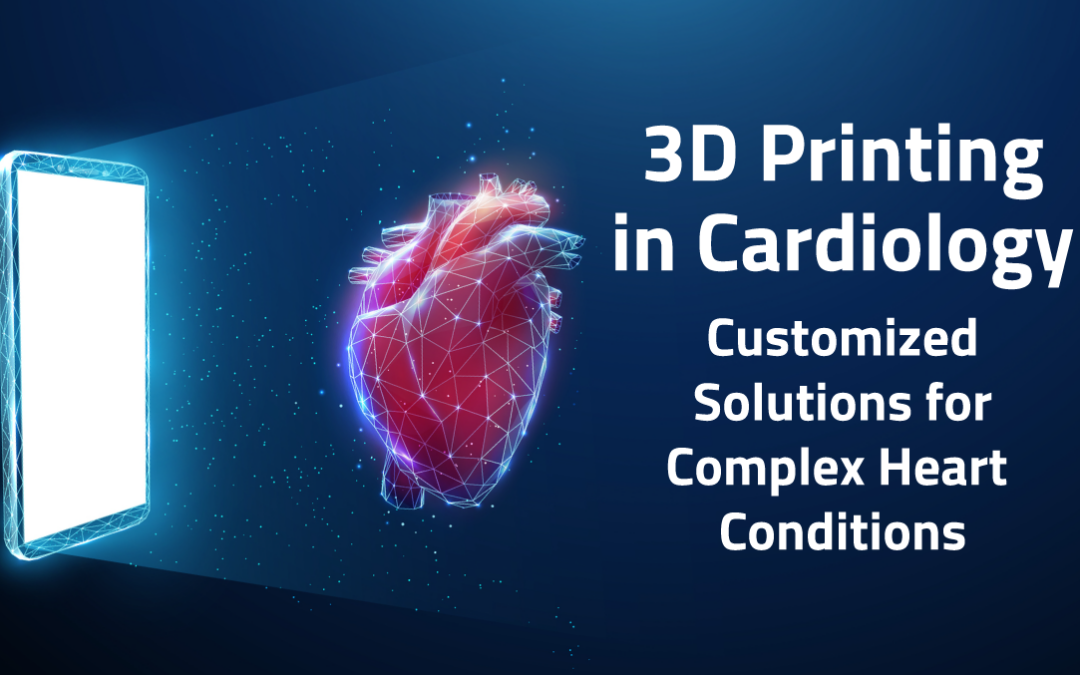3D Printing in Cardiology: Customized Solutions for Complex Heart Conditions
3D printers were once strictly used in manufacturing, massive machines forming and producing parts. Now, a 3D printer can be purchased for under $200 for use at home, producing everything from arts and crafts projects, to gears and tools—even your own furniture.
3D printing continues to advance and evolve on an industrial scale, being applied in everything from automotive manufacturing and aerospace engineering to architecture and construction to the medical device and healthcare space. When it is used at this level and scale, 3D printing is often referred to as “additive manufacturing”—adding material in layers to create the final product. That is because 3D printing follows a digitally created computer-aided design (CAD) to produce a three-dimensional object by depositing material layer by layer in precise shapes using a specialized printhead, nozzle, or other printing technology.
The field of cardiology is embracing 3D printing technology and its potential for improving cardiac devices, cardiovascular surgery, and patient outcomes.
3D Printing of Cardiac Devices
While 3D printing technology is not quite ready to punch out personalized pacemakers (yet), it is being used in the research, development and testing of the next generation of pacemakers and other implantable cardiac devices.
A team from Rice University designed a 3D-printed heart and wireless pacemaker consisting of a network of chips placed inside the heart that can sense a change in heart rhythm and release a jolt of energy to re-establish normal heart rhythm. The use of wireless sensors replaces the need for leads, which over time can become dislodged and disconnected.
In heart valve replacement therapy, either a created artificial or biologically derived heart valve can be used. The challenges to successful heart valve replacement include long-term durability and functionality to circulate blood efficiently without the need for ongoing medication, as well as the current limitations for patient-specific customization. Research published in the International Journal of Polymeric Materials and Polymeric Biomaterials proposes a “3D printed melt-compounded antibiotic loaded thermoplastic polyurethane heart valve ring” as the future of heart valve replacement. Patients would receive a customized and drug-loaded polymeric heart valve ring designed for mechanical durability and personalized biocompatibility.
While the majority of heart valves, stents, pacemakers, defibrillators, and other implantable cardiac devices are mass produced, 3D printing has the potential to enable the creation of more customized components, based on patient need, physiology, and anatomy.
3D Modeling and Precision Printing
No heart or body is exactly the same. When it comes to inserting a stent or placing pacemaker leads, every millimeter matters. The anatomical variation between patients can present a challenge to doctors, and currently they are limited in their ability to adjust devices and parts to precisely fit. 3D printing has the potential to deliver precision medical devices.
To help doctors tailor treatments and devices to a patient’s specific heart, a team of MIT engineers has used 3D printing to create a soft, flexible model of a patient’s heart and aorta. The printed heart is based on three-dimensional computer modeling images taken of the patient, capturing the exact specifications and rhythm of the heart and aorta. The model can even emulate the exact pumping action using printed “sleeves,” similar to those used on a blood pressure machine.
The use of 3D imaging and modeling has proven popular and successful for pre-op planning, helping doctors to “refine anatomic diagnosis before surgery” and get a hands-on feel for the exact size and situation they’ll be working in specific to their patient. This can be especially important when performing procedures on children, as their small size and on going development and growth can make for complex procedures. A personalized 3D-printed model was used for a pediatric patient suffering from “congenitally corrected transposition of the great arteries.” The guidance of 3D printing led to a successful operation and a smooth recovery for the patient.
3D Bioprinting
The MIT team’s model heart demonstrates how 3D printing can be used to precisely capture and replicate both the form and function of a vital organ. The next innovation could be “printing” an actual organ!
By using 3D printing in tissue engineering applications, new cells and whole organs could potentially be created. This bioprinting is actually inkjet printing using a bio-ink made of cells that is sprayed in layers onto a hydrogel substrate, which is slowly built up to form three-dimensional structures.
Cardiovascular researchers are looking at the clinical applications of bioprinting, including for heart patches and tissue-engineered cardiac muscle, and overall, see using bioprinting in cardiac tissue engineering as “a promising strategy for repairing heart defects and offers platforms for studying cardiac tissue.”
3D printing has exciting potential for the field of cardiology. As the technology continues to evolve and researchers explore new ways to apply it, a personalized 3D printed pacemaker, or even a new heart, could be just a few years away.

